Constructed From a Vision: The Extraordinary Home of Chief Plenty Coups
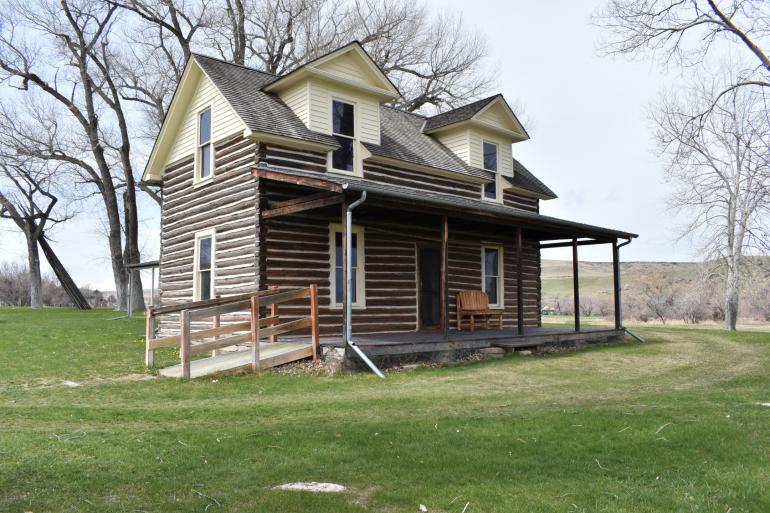
Photo by Josh Gross
About half a mile west of the town of Pryor, at the base of the Pryor Mountains, lies a verdant green field dotted with occasional Cottonwood shade trees. Pryor Creek wends lazily along the western edge, and in the middle lies a rustic old house, constructed by hand. Handsome and modest, stately in its way but not luxurious, the home is made of rough-hewn logs and boasting two covered porches and a second-floor - relatively rare for the time, and for being so far out west.
Even so, it's a far cry from one of the Copper Kings' mansions or cattle magnate's manors. But sometimes, it is not the opulence or grandeur of a home that makes it exceptional, but the human story and the history it represents.
Visions are essential to the Crow tribe. Traditionally, adolescents would purify themselves with a steam bath and then go to a secluded area, often the Pryor Mountains, enduring four days without food or water until they achieved a trance state. In the old days, they would often add self-injury to the ritual, cutting off a piece of a finger as Plenty Coups did or dragging a buffalo skull affixed to their chest via piercings behind them. Then, if the spirits were willing, some sort of guardian spirit (many times one of the legendary "little people" of the Pryors) would appear and usher them towards wisdom.
These visionary episodes are striking - Plenty-Coups's biographer, Frank Linderman, recounts how the Chief told him of the vision of one of his friends, Medicine Raven, who at the age of 19 foretold "wagons flying through the air" and died years before such a thing would come to pass.
Linderman went on to say that "Old Indians have told me that dreams foretold the coming of white men years before they appeared on this continent, and that even the clothes and weapons of the strangers had been minutely described by men who saw them in their dreams," noting that "Crows saw steamboats on the Missouri River very early, but this could not have led them so far as to foretell railroads, flying machines, and many-storied buildings where white men 'lived one above another.'"
When Chief Plenty Coups of the Crow was a young boy, he embarked on two dramatic vision quests. The second occurred when he was just nine years old. He cut off part of his finger and passed out. He saw a spiritual guide in his sleep who appeared to him and ushered him underground, where he saw thousands of buffalo in tunnels below the earth.
Then, emerging into the sunlight, he saw as those thousands of buffalo were disgorged from the earth - and then disappeared. Then another kind of animal came out of the hole in the ground, something like a buffalo but different - many were white and spotted and sported long, strange tales that reached almost to the ground.
It would be years before he understood what the vision meant - it meant that the buffalo, a profoundly important resource to the Native-Americans in general, and to the Crow tribe in particular, would disappear and be replaced - by the domesticated beef brought to the plains by Anglo-American settlers.
But that wasn't the only prophetic aspect of his dream. Before it ended, the little person revealed the image of an old man to the little boy. The old man was resting in the shade of a tree, and beside him was a two-story house in the manner of those made by the white man.
"Do you know this old man," asked the spirit in his vision. The little boy said that he did not.
"It is you."
Many years later, he would build the house exactly to the specifications of his dream.
Within the Crow tribe, Plenty Coup was well known as a visionary, both literally and figuratively, and thus his early visions were afforded great weight. Under his leadership, the Crow would not fight against the white man, as many of the plains tribes did, but aid them by supplying scouts to the "bluecoats" and helping to subdue the Sioux.
Plenty Coup said that "The Cheyenne, and the Sioux... have always been our enemies... But when I fought with the white man against them it was not because I loved him or because I hated the Sioux and the Cheyenne, but because I saw this was the only way we could keep our lands... And it was my dream that taught us the way." A few moments later, he told Linderman that he "is old and am living an unnatural life. I know that I am standing on the brink of the life that nobody knows all about, and I am anxious to go to my Father, ah-badt-dadt-deah, to live again as men were intended to live."
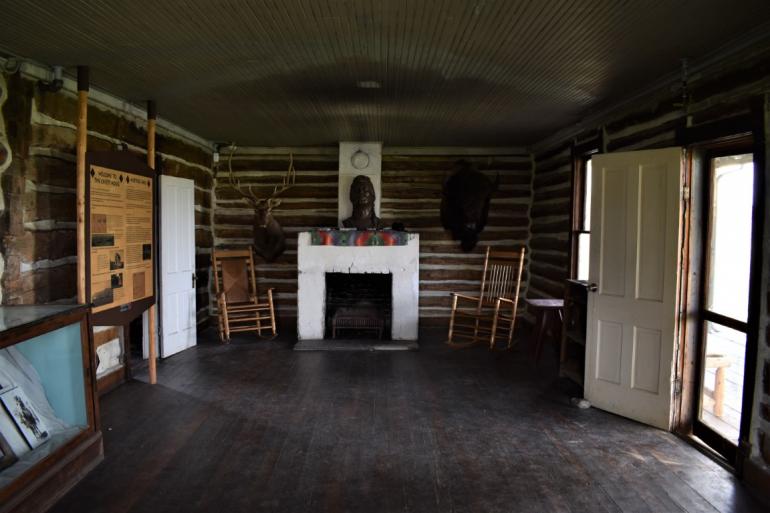
Photo by Joshua Gross.
It is sad to think that he considered his life unnatural, whether in its longevity (he lived to be 84) or through his eventual housing arrangement. Indeed, despite his evident pride in his house, he kept it largely unfurnished and slept in a tipi erected beside the structure for most of his life on the property. In part, this was because tipis are better insulated in winter, and better ventilated in summer. But in the last three years of his life, he moved entirely into the house.
Joshua Gross has been working at Chief Plenty Coups State Park for five months, having "always been interested in history, and because," he tells me, "I was always intrigued by the fascinating story of Chief Plenty Coups and Crow-U.S. relations." He tells me that, in some ways, the house is an amalgam of traditional Crow and Anglo settler ideas in home construction:
"Chief Plenty Coup did work from a design, and it was based on Crow culture. The chief wanted a two-story house with a smoke hole in the top, with an eastern-facing front door and no windows - just like a tipi... Originally, Plenty Coup's house was scarcely furnished. Visitors and residents would initially sift on a pile of buffalo robes with their backs against a wall, not unlike sitting in a tipi."
There were, however, some pieces of furniture that Plenty Coups put in the house, including a chair with a pop-up footrest and a handmade couch.
Near the end of his life, Plenty Coup began some renovations on the home inspired by a recent trip to Mt. Vernon, where he toured the home of George Washington. He built a new rectangular addition to his house, including a fireplace that emulates one he saw in Washington's estate. Then he raised the ceiling in the original building to match the height ceilings of the addition.
Plenty Coup reported feeling an affinity for Washington, who also served as the inspiration for one of the last, and most important decisions of his life. Standing at Washington's grave, he fell into a quiet thoughtfulness:
"...In the silence there I sent my thoughts to the Great White Chief in that other life. I spoke to him, and I believe he heard me. I said, 'Great Chief, when you came into power the streams of your country's affairs were muddy. Your heart was strong, and your tongue spoke straight. Your people listened, and you led them through war to the peace you loved. They remember your words even to this day, are helped and made strong by them. As you helped your people, help me now, an Absarokee chief, to lead my people to peace. I, too, have a little country to save for my children."
Plenty Coup told Linderman that the experience made him realize that he wanted to leave his house and the surrounding land to his people, saying, "I felt them that he heard me, and I have not changed my mind... I planned then to leave my house and some land around it, as a park for my people. I wish the title to rest with the tribe itself, and not with any clan or society. I have spent my life here. This spot has shown me in my great medicine-dream, and I want my people to possess it forever, just as white men own and keep the home of their great Chief, George Washington."
The visionary leader achieved that solemn wish; the home still stands, held in trust by the Crow, this state, and the nation.
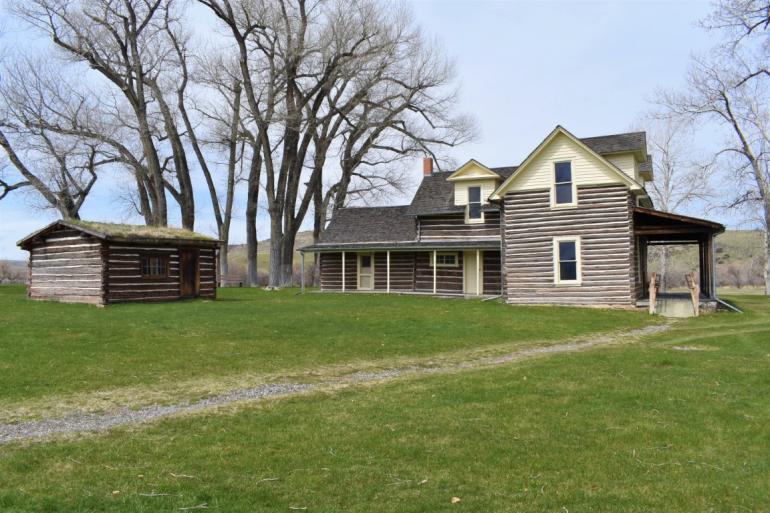
Photo by Joshua Gross
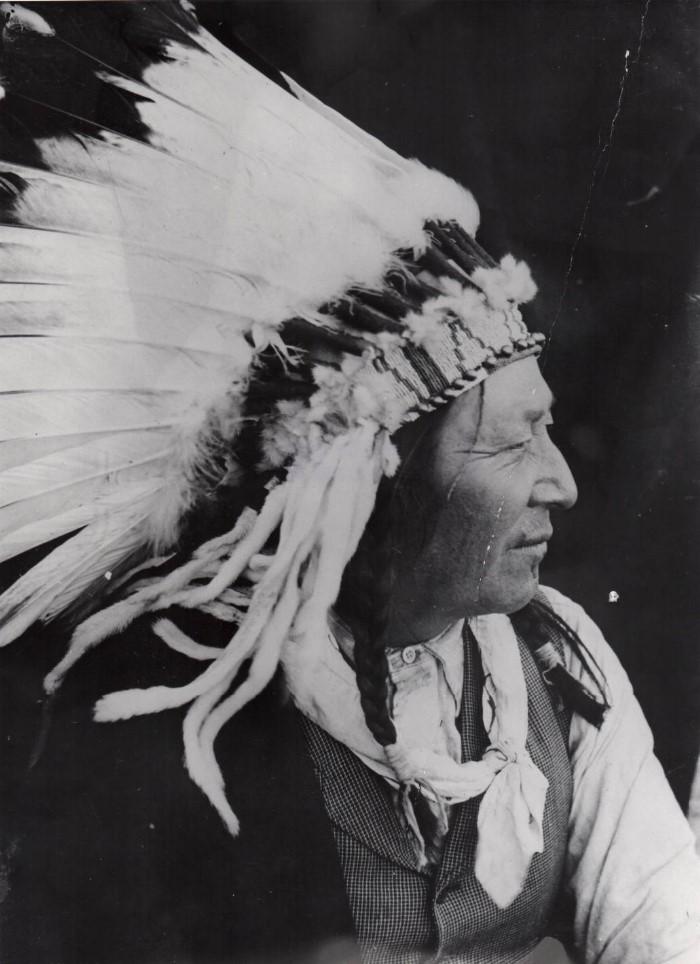
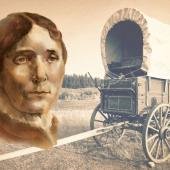
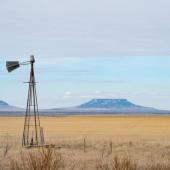



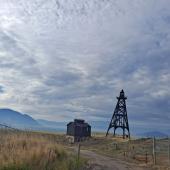




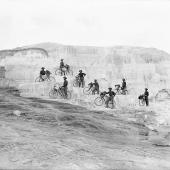
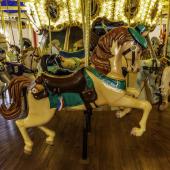
Leave a Comment Here